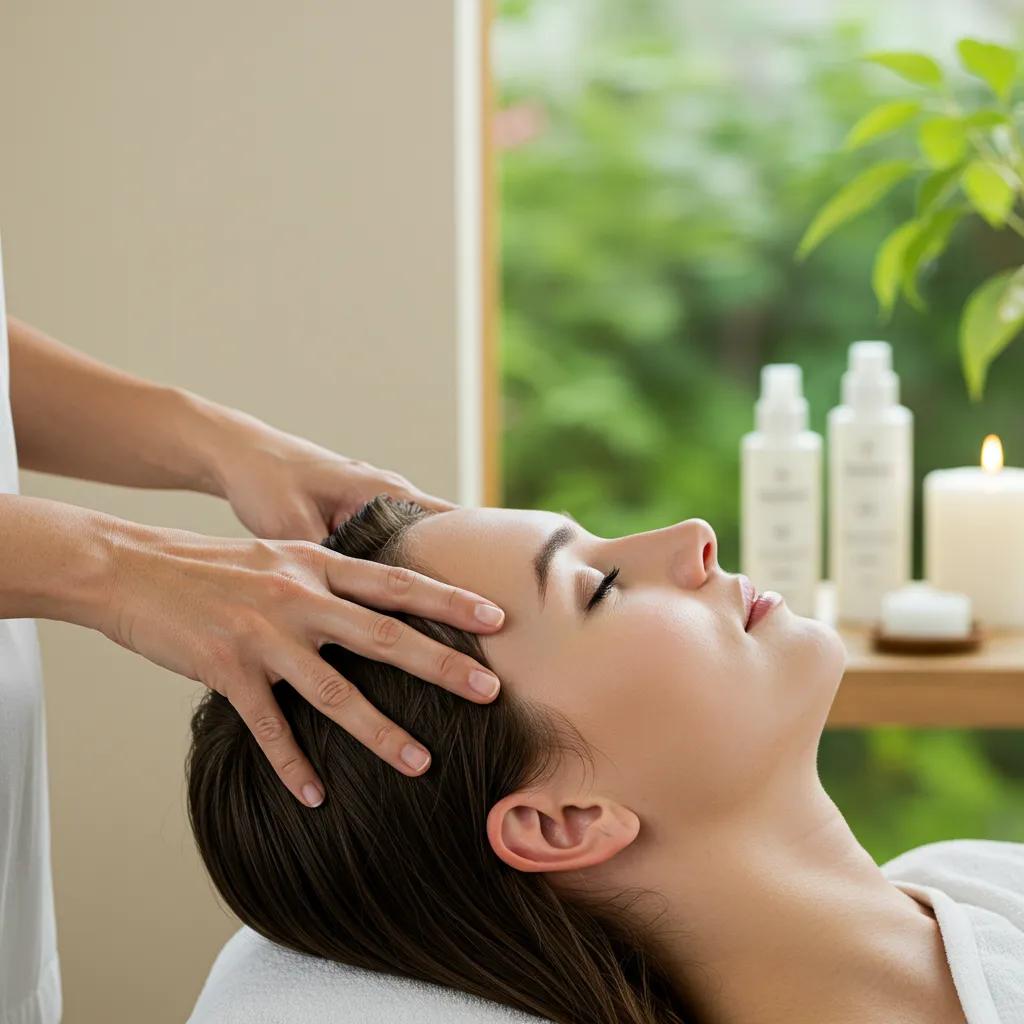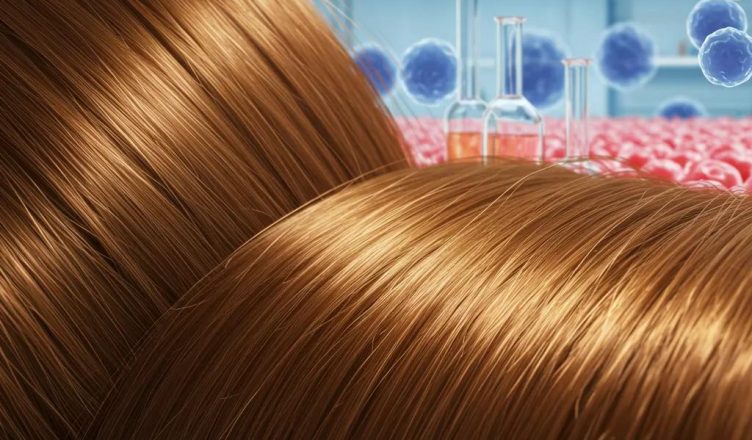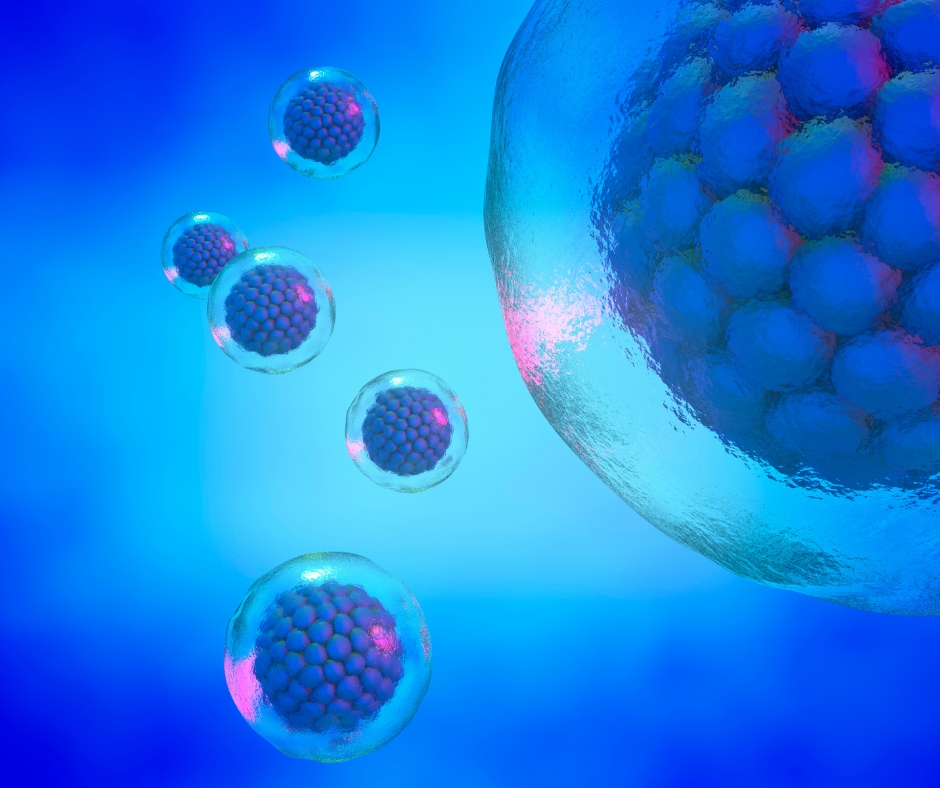Stem Cells and Hair Longevity: How Stem Cell Hair Regeneration Enhances Hair Growth and Anti-Aging Treatments
Beginning hair thinning and fragility often signal deeper cellular decline in aging follicles, yet stem cell interventions now promise to revive dormant regeneration pathways. This guide reveals how stem cells and anti-aging strategies target follicle regeneration to extend hair longevity, restore density, and delay age-related thinning. You will discover what stem cells are and how they awaken hair follicle stem cells, why scalp health and the hair growth cycle matter with age, and which cutting-edge regenerative modalities outperform traditional treatments. We’ll also explore key anti-aging hair ingredients, lifestyle and nutritional support, emerging innovations in regenerative medicine, and the truths behind common myths about stem cell hair therapy.
What Are Stem Cells and Their Role in Hair Follicle Regeneration?
Stem cells are undifferentiated cells with self-renewal capacity that stimulate hair follicle regeneration by releasing growth factors and cytokines. They serve as bioactive factories that reawaken quiescent follicle stem cells in the bulge region, promoting anagen reentry and new hair shaft formation. For example, mesenchymal stem cells secrete vascular endothelial growth factor to enhance microcirculation and dermal papilla cell proliferation, directly improving hair density and diameter.
By integrating stem cells into scalp treatments, researchers aim to address root-cause follicle miniaturization rather than just mask symptoms. This cellular approach lays the foundation for combining regenerative therapies with topical actives, nutritional optimization, and scalp care routines that together enhance hair longevity and counteract aging hair prevention.
What Types of Stem Cells Are Used for Hair Regeneration?

The main classes of stem cells applied in hair regeneration include mesenchymal, dermal papilla, and adipose-derived cells, each offering unique differentiation and paracrine benefits.
These stem cells differ by source, ease of harvest, and secretion profile, yet all converge on enhancing follicle regeneration through growth factor release. Understanding these variations guides personalized treatment selection to maximize hair longevity.
How Do Stem Cells Stimulate Hair Follicle Stem Cell Activation?
Stem cells stimulate quiescent hair follicle stem cells by secreting growth factors such as VEGF, IGF-1, and FGF-7 that bind to receptors in the hair bulge. This paracrine signaling initiates Wnt/β-catenin pathways and Akt/mTOR cascades, leading to follicle stem cell proliferation, migration into the hair germ, and transition into the anagen phase.
By reactivating molecular switches that control the hair cycle, stem cell therapy not only increases hair count but also improves shaft thickness and resilience—key outcomes for aging hair prevention and long-term density maintenance.
Which Sources Provide the Most Effective Stem Cells for Hair Treatment?
Stem cells can be harvested from adipose tissue, bone marrow, and umbilical cord, each with distinct potency and accessibility.
Adipose-derived cells often lead for ease of harvest and abundance of trophic factors, while umbilical cord sources excel in proliferative potency for advanced regenerative protocols. Choosing the ideal source depends on treatment goals, patient health status, and regulatory considerations.
Research highlights the significant role of mesenchymal stem cells in treating hair loss, noting their signaling and growth factor influence.
Mesenchymal Stem Cell Therapy for Androgenic Alopecia and Hair Loss
Mesenchymal stem cell-derived signaling and growth factors obtained by platelets influence hair growth through cellular …… regenerative stem cell therapy in androgenic alopecia and hair loss: Wnt pathway, growth-factor, and mesenchymal stem cell signaling impact analysis on cell …, Unknown Author, 2019
How Does Hair Aging Affect Hair Follicles and Hair Longevity?
Aging hair exhibits slower growth rates, reduced shaft diameter, and longer dormant phases due to follicle senescence and diminished stem cell activity. Chronic oxidative stress and inflammation in the scalp microenvironment trigger miniaturization, leading to thinning and compromised resilience.
Understanding these cellular and molecular changes informs strategies to counteract aging hair prevention, including targeting senescent markers, enhancing microcirculation, and optimizing growth factor delivery to preserve follicle health and extend hair longevity.
What Is the Hair Growth Cycle and How Does It Change with Age?
The hair growth cycle comprises three phases:
- Anagen (Growth) – Active mitosis in the follicle matrix produces a new hair shaft.
- Catagen (Regression) – Follicle involution and apoptosis reduce bulb activity.
- Telogen (Resting) – Follicle dormancy before shedding and reentry into anagen.
With age, anagen duration shortens while telogen prolongs, resulting in decreased hair density and slower renewal. Restoring balance between these phases through regenerative interventions supports sustained hair longevity.
What Are the Main Causes of Hair Loss and Thinning?
Hair loss and thinning arise from multiple factors:
- Androgenetic Alopecia driven by dihydrotestosterone-induced follicle miniaturization
- Hormonal Imbalances such as thyroid dysfunction and menopausal shifts
- Genetic Predisposition influencing follicle sensitivity and cycle dynamics
- Environmental Stressors including UV exposure, pollution, and poor scalp hygiene
These causes often converge, accelerating follicle aging. Addressing each factor through targeted therapies and lifestyle adjustments enhances overall hair longevity and aging hair prevention.
How Does Scalp Health Influence Hair Longevity?

A healthy scalp provides optimal oxygenation, nutrient delivery, and pH balance, all critical for follicle vitality. Chronic inflammation, sebum imbalance, or microbial overgrowth disrupts stem cell niches and impairs growth signaling, leading to fragile, thinning hair.
Improving scalp health through gentle cleansing, exfoliation, and anti-inflammatory serums creates a regenerative environment that supports stem cell therapies and prolongs hair longevity by minimizing oxidative and immunological insults.
What Are the Different Stem Cell Therapies for Hair Restoration?
Stem cell therapies for hair restoration range from direct injections to scaffold-enhanced grafts and topical formulations loaded with exosomes. Each modality leverages the regenerative capacity of stem cells to awaken dormant follicles and improve hair quality.
Combining these approaches with microneedling or laser pretreatment can enhance cell penetration and growth factor absorption, delivering synergistic benefits for sustained hair density and anti-aging scalp renewal.
How Do Stem Cell Injections, Topicals, and Transplants Work?
Stem cell injections deliver concentrated cells directly into the scalp’s dermal layer, where they secrete growth factors that activate follicle stem cells. Topical serums and lotions formulated with exosomes provide non-invasive growth factor delivery that nourishes follicles over time. Stem cell–enhanced transplants integrate cell-rich grafts into thinning areas, combining traditional grafting with regenerative signaling.
These delivery methods differ in invasiveness, retention time, and clinical complexity, offering flexible options to match patient needs and treatment settings.
What Are the Success Rates and Clinical Evidence for Stem Cell Hair Treatments?
Recent clinical studies report a 29–48 percent increase in hair density after mesenchymal stem cell injections over a six-month period, with improved shaft thickness and patient satisfaction. Early-phase trials of dermal papilla cell transplants show promising anagen induction in over 70 percent of participants. Exosome-based topicals yield a 35 percent average reduction in shedding rates after three months of nightly application.
Such evidence underscores the regenerative potential of stem cell therapies when protocols are optimized for dosage, cell viability, and delivery technique.
Adipose-derived stem cells are gaining recognition for their potential in treating alopecia, with ongoing research exploring their mechanisms and clinical applications.
Adipose-Derived Stem Cells for Hair Loss Treatment and Regeneration
Adipose-derived stem cells (ADSCs), a subset of mesenchymal stem cells, represent a promising new approach in the treatment of alopecia. This review provides a detailed examination of the fundamental properties of ADSCs and their derivatives, exploring their mechanisms of action in alopecia therapy. Analysis of the efficacy of ADSCs and their derivatives in both preclinical and clinical settings highlight their potential to stimulate hair regeneration. Additionally, the review discusses various pre-treatment methods designed to enhance the regenerative capacity of ADSCs in hair growth, elucidating the mechanisms involved.Mechanisms and clinical progress of adipose-derived stem cells and their derivatives in the treatment of hair loss, Unknown Author, 2025
How Do Stem Cell Therapies Compare to Traditional Hair Loss Treatments?
Stem cell therapies deliver superior density gains by targeting follicle stem cell niches directly, outweighing limitations of growth-prolonging or hormone-modulating approaches. They offer long-term hair longevity benefits through tissue-level regeneration rather than temporary cycle modulation.
Which Anti-Aging Hair Treatments Support Hair Longevity Alongside Stem Cell Therapy?
Anti-aging hair treatments featuring biotin, peptides, panthenol, and plant-derived growth factors complement stem cell regeneration by nourishing the scalp environment and reinforcing hair shaft structure. These ingredients strengthen emerging follicles and reduce oxidative stress, amplifying the cellular reboot initiated by stem cells.
Integrating topical anti-aging serums and shampoos with regenerative protocols creates a holistic anti-aging scalp regimen that boosts hair longevity and resilience.
What Are the Key Ingredients in Anti-Aging Hair Products?
- Biotin to support keratin structure and improve hair elasticity.
- Peptides that mimic growth factor signals and bolster follicle viability.
- Panthenol (Pro-vitamin B5) for moisture retention and cuticle smoothing.
- Plant-Derived Growth Factors such as bamboo extract to promote cellular renewal.
How Do These Products Complement Stem Cell Hair Regeneration?
By delivering antioxidant protection and structural support, anti-aging ingredients sustain the microenvironment that stem cells require to thrive. Peptides reinforce newly formed follicles, biotin aids rapid shaft formation, and panthenol maintains optimal moisture balance. This synergy ensures grafted or injected cells are supported through all hair cycle phases, prolonging density gains and delaying hair aging.
The field of stem cell therapy for hair loss is rapidly advancing, with various approaches like transplants, conditioned media, and exosomes showing promise in reactivating hair follicle stem cells.
Advances in Stem Cell Therapy for Hair Loss and Regeneration
Stem cell-based therapies have recently received lots of attention as potential novel treatments that focus on reactivating hair follicle stem cells and in this way enhance hair follicle growth, regeneration and development. Stem cell-based therapy approaches include stem cell transplant, stem cell-derived conditioned medium and stem cell-derived exosomes.Advances in stem cell-based therapy for hair loss, M Tomic-Canic, 2020
How Can Lifestyle and Nutrition Enhance Hair Longevity and Stem Cell Therapy Outcomes?
Holistic support through diet, stress management, and scalp care fortifies regenerative treatments by supplying essential building blocks and minimizing catabolic influences. A nutrient-rich lifestyle complements cellular therapies and creates lasting conditions for hair longevity.
What Nutritional Factors Promote Healthy Hair Aging?
How Does Stress Management Impact Hair Follicle Health?
Chronic stress elevates cortisol levels, triggering inflammatory cascades that accelerate follicle miniaturization and prolong telogen. Mind-body practices such as meditation, yoga, and guided breathing reduce neuroendocrine stress responses, preserving follicle stem cell reservoirs and supporting anagen entry. By lowering systemic inflammation, stress management creates a supportive foundation for regenerative hair treatments.
What Scalp Care Practices Support Hair Growth and Longevity?
- Gently cleanse with pH-balanced shampoos to remove debris without stripping lipids.
- Perform regular scalp massages to enhance blood flow and nutrient delivery.
- Avoid excessive heat styling and harsh chemicals that compromise follicle health.
What Are the Future Trends and Innovations in Stem Cell Hair Regeneration and Hair Longevity?
Emerging research is unlocking small molecule drugs that mimic growth factor activity, metabolic switches that rejuvenate aged follicles, and bioengineered scaffolds for precise cell delivery. These innovations promise scalable, non-invasive solutions that further extend hair longevity and ease clinical adoption.
Building on current regenerative successes, the next wave of therapies will integrate gene editing and personalized cellular vaccines to preempt hair aging processes before visible thinning occurs.
What Advances Are Being Made in Regenerative Medicine for Hair Loss?
Key developments include:
- Small Molecule Follicle Activators that trigger Wnt signaling without live cells.
- 3D-Printed Scaffolds embedding dermal papilla cells for precise grafting.
- Metabolic Reprogramming Agents that reverse follicle stem cell senescence.
How Are Clinical Trials Shaping the Future of Stem Cell Hair Treatments?
Ongoing Phase 2 and 3 studies are evaluating standardized mesenchymal stem cell injections in large cohorts to establish dosing guidelines, safety profiles, and long-term efficacy. Allogeneic exosome trials focus on scalable off-the-shelf serums for home use. These trials refine treatment protocols and pave the way for regulatory approvals that will broaden patient access to regenerative hair solutions.
What Role Will Genetics and Preventive Haircare Play in Hair Longevity?
Advances in genomics enable early identification of predisposition to androgenetic alopecia and other thinning disorders. Preventive regimens tailored to genetic risk factors—combining scalp gene-expression profiling with customized nutrient and peptide blends—offer proactive hair longevity strategies. Early intervention anchored in personalized data represents the future of anti-aging haircare.
What Are the Common Questions and Myths About Stem Cell Hair Treatments?
Misinformation abounds around stem cell hair therapies, from exaggerated cure claims to safety concerns. Clarifying evidence-based facts ensures informed decisions and realistic expectations for anyone exploring regenerative hair restoration.
Does Stem Cell Hair Treatment Really Work?
Yes, robust clinical studies demonstrate that stem cell hair treatments can increase hair density by up to 48 percent, improve shaft thickness, and reduce shedding. By targeting follicle stem cell niches and reactivating growth pathways, these therapies deliver measurable improvements in hair longevity and quality.
What Are the Risks and Side Effects of Stem Cell Hair Therapy?
Stem cell therapies generally exhibit favorable safety profiles, with minor side effects such as transient redness, swelling, or mild discomfort at injection sites. Rigorous donor screening, sterile processing, and controlled cell doses minimize immunological reactions and infection risks, ensuring a high trust standard for regenerative scalp treatments.
When Will Stem Cell Hair Transplants Become Widely Available?
Scaled manufacturing, streamlined protocols, and positive trial outcomes suggest broader availability within the next 2–3 years. As regulatory frameworks adapt to regenerative medicine advances and clinics adopt standardized cell culture techniques, stem cell hair transplants will transition from specialized research centers to mainstream hair restoration practices.
Stem cell interventions are redefining the fight against aging hair by repairing follicles at their source, extending anagen phases, and fortifying new shafts. When combined with targeted anti-aging ingredients, holistic lifestyle support, and emerging precision medicine, this cellular approach offers a durable solution for hair longevity. Ongoing innovations and clinical validation promise to make regenerative haircare an accessible, first-line strategy for addressing thinning, fragility, and age-related hair decline.
Authored By:
Dr. Charles Pereyra
Regenerative Health Expert
Founding Physician at Springs Rejuvenation



